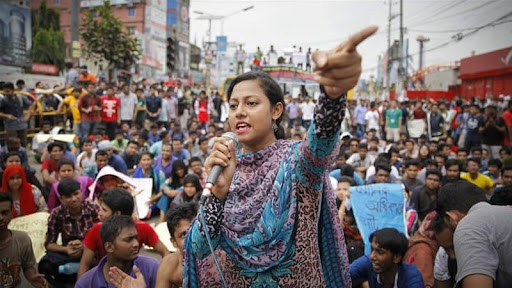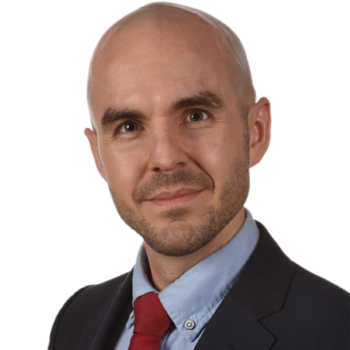In 2018, two high school students in Bangladesh were killed by a bus speeding to beat another bus to pick up passengers. The accident might have been written off like so many traffic deaths in Bangladesh — a small-scale tragedy quickly forgotten in a country where fatal traffic accidents are common and where cynicism about a highly-polarized political system has made many lose faith in the government’s ability to perform even basic functions like ensuring road safety. Instead, anger over the deaths spread across social media, and tens of thousands of students soon hit the streets, overcoming the country’s political divides to demand greater road safety. Even when met with violent attacks by police and government supporters, the students continued protesting. Eventually, they won passage of a new road safety act with harsh penalties for reckless driving.
The road safety movement is one of several recent “non-partisan,” youth-led movements in Bangladesh that have mobilized young people to push for change using nonviolent civil resistance. Drawing on their identities as young people and students — and often explicitly rejecting connections to established political figures — these movements have fought back against police brutality, sexual violence, environmental degradation, and political corruption. Three of these movements — the road safety movement, the 2015 movement against a value added tax (VAT) on education, and the 2020 “Stop Rape” movement — have been especially successful, mobilizing tens of thousands of participants, gaining public attention, and achieving short-term concessions. One of us, Maha, has been a close observer and participant in youth movements in Bangladesh, including the Save-the-Sundarbans movement as well as the movement against Bangladesh’s Digital Security Act. The other two of us, Miranda and Jonathan, have been studying the impact of youth-led movements in several contexts around the world.
Research shows that participation is the key to achieving a movement’s goals. But in environments that are highly polarized, achieving broad and diverse participation is challenging. A key way that youth organizers succeed is by creating movements that bring together a wide range of people across different segments of society.
One of the greatest strengths of these movements is their identity as youth movements. They focus on the common challenges that young people face, from sexual violence to rising school fees. In countries like Bangladesh, where political polarization has often kept real change from happening, this focus on non-partisan identity has allowed movements to mobilize across divides and achieve breakthroughs in the face of significant challenges.
Polarization, Political Apathy, and Youth in Bangladesh
The major axis of polarization in Bangladesh centers on the country’s two political parties: the Bangladesh National Party (BNP) and the Awami League (AL). The AL, representing itself as a “secular” political party, is currently in power; BNP, the main opposition party, represents itself as a nationalist party with a moderate Islamic orientation.
Since the fall of the country’s military regime and transition to a democratically-elected government in 1991, the AL and BNP have each ruled the country twice. Both political parties have greatly disappointed the population with their extensive records of corruption, human rights violations, breaches of press freedom, and destruction of the dignity of state institutions. Within a matter of only two decades, political apathy has become widespread. Partisan activities receive very little attention or sympathy among most people, even if they relate to popular demands like curbing inflation or corruption.
Youth comprise nearly one-third of the total population in Bangladesh, which is home to about 45 million people between the ages of 18 and 35. The political, social, and economic background of young people in the country remains massively diverse, and most youth groups are thus not homogeneous. Generally, Bangladeshi youth participating in nonviolent action can be divided into four broad categories: 1) partisan youth (belonging to the main two political parties), 2) non-partisan youth (having no affiliation with any political party), 3) left-leaning progressive youth (either student wings of left parties or individual left activists), and 4) Islamic youth (youth wings of the existing Islamic parties).These youth groups act differently from one another depending on their background, funding sources, and political allegiance or non-allegiance. Activities carried out by the various categories of youth are also perceived differently by the wider society — a critical factor in determining the success or failure of different youth actions.
Both mainstream political parties have their own official youth or student wings, which register large numbers of young people. Youth wings regularly carry out rallies or processions supporting their parties’ central agendas and are directly funded by their mother parties. These groups not only think and operate in line with traditional partisan politics; their activities are also controlled from the center. For the last two decades, the mainstream parties have used these youth cadres as political weapons, sometimes even deployed to the streets to attack rivals.
However, most ordinary people, particularly young people, have gotten tired of the constant back and forth between the two political parties. When supporters of the political parties take to the streets, there are often violent confrontations with others who are fed up with the political parties’ inability to create change. Among young people, this disillusionment has gotten so high that many describe themselves as hating politics or, at best, being indifferent to it.
Ironically, this apathy has been accompanied by a rise in the number of youth-led social movements, a number of which have gained massive popularity. For example, in October 2020, students and other young people, particularly young women, led a wave of anti-rape demonstrations after video footage of a group of men sexually assaulting a women went viral on social media. The back-to-back street protests against government inaction to alarming increases in violence against women and girls attracted tens of thousands of people in several districts across the country — the first large-scale protests against sexual violence to take place over an extended period of time. The protests garnered media attention, and the government eventually moved to approve the death penalty for convicted rapists. Many protestors, though, did not support such punitive actions, and officials have been slow to implement reforms aimed at preventing gender-based violence and protecting women and victims of sexual assault.
Non-partisan youth movements have taken great care to ensure their independence from major political parties and establish their identity as youth movements. During the Road Safety movement, protesters carried their backpacks and wore school uniforms to identify themselves as students. Similarly, during the “No VAT” movement in 2015 — which brought out thousands of young people to protest a tax on higher education in private universities — organizers asked protestors to visibly carry their university ID cards. Finance officials later withdrew the VAT imposed on tuition fees.
Non-partisan youth movements are also developing new means of communicating about politics. Mainstream political parties and partisan youth groups often use social media to spread political rhetoric and propaganda, target the opposition with vicious language, and glorify their leaders. By contrast, non-partisan youth movement slogans are precise and direct, with demands such as, “We want safe roads,” “No VAT on education,” and “Stop rape.” Even in their social media, organizers have made an effort to build a clean image for the movement. Maha has repeatedly seen the organizers of Facebook groups scrutinize all posts before publishing, prohibit the use of foul language, and avoid controversial statements or activities.
Non-Partisan Youth Organizing Around the World
Non-partisan, youth-led movements for progressive change aren’t limited to Bangladesh. In recent years, young people from around the world have formed new movements that refuse to be co-opted by existing political party structures.
In Senegal, for instance, a group of rappers, artists, journalists, and other young people — frustrated with political institutions and leaders amid frequent power cuts, government corruption, and poor economic conditions — led a movement under the slogan: Y’en a Marre (We’re Fed Up). Starting in 2011, Y’en a Marre leaders began organizing protests and events that attracted thousands of people. Movement leaders organized a voter registration drive, in which they made a point to separate the movement from partisan politics by asking people to avoid pledging allegiance to any of the established political parties ahead of the country’s 2012 elections.
In South Africa, there has been growing discontent with the longtime ruling party amid a political environment characterized “by hostile elites and political groups jostling for power.” In response, youth groups have formed movements calling for widespread cultural, economic, political, and social changes. Most notably, the Rhodes Must Fall and Fees Must Fall movements, which originated on university campuses in 2015, claimed a non-partisan stance as they struggled against institutional racism within their schools and advocated for a broader decolonization process across post-apartheid South African society. The movements, which inspired similar protests in other parts of the world, operated outside the bounds of traditional party politics, instead seeking the types of structural changes not brought about by the parties and politicians in power since the formal end of apartheid in 1994.
The Road Ahead
The non-partisan approach has proved a powerful way of overcoming polarization in a highly polarized context like Bangladesh. But movements’ focus on non-partisan youth identity has also come with significant downsides. While many of these movements achieved short-term concessions from the government, they have, for the most part, failed to sustain themselves over time. As a result, many of their gains have since been rolled back. Focusing on a single, powerful issue with the potential to bring together diverse groups of young people has proved a powerful way to gain mass support, but without greater political vision and organizational strength, it is challenging to translate short-term success into meaningful political change.
Organizers need to strike a balance between the significant mobilization power that a non-partisan youth identity can provide and the necessity of forming a concrete set of transformational demands and sustainable organizational structures that can continue to push for concrete change. Regardless of these challenges, the lesson from Bangladesh is that, even in a heavily-polarized country, when organizers focus on highlighting their movement’s cross-cutting youth identity and broadly popular goals, they can spark major movements for change.



